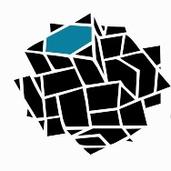Share
Pathways to Linking Science and Policy in the Field of Global Risk
Reported by Anna Kliampa, CSaP Policy Intern
The Centre for the Study of Existential Risk (CSER) and the Centre for Science and Policy (CSaP), University of Cambridge, co-hosted a webinar in June 2021 as a launch event presented for the report, ‘Pathways to Linking Science and Policy in the Field of Global Risk’. This report has been developed to help guide and enhance the policy engagement efforts of researchers at CSER and other research institutions. This work is part of the project 'A Science of Global Risk', which is focused on safeguarding humanity’s long-term future by being rigorous and creative; open to diverse groups; and capable of producing concrete proposals for risk management that can be implemented within the existing policy landscape.
The webinar started with an overview of the content of the report by Dr Clarissa Rios Rojas from CSER. CSER is dedicated in the study and mitigation of risks that can lead to human extinction. Amongst the areas they cover are possible dire effects of AI, genetic engineering, nuclear war, and asteroid collapse. In this regard, the report takes on a global challenges framework to recommend possible ways to safeguard future societies combining science and policy in the governance of global risk.
According to Dr Rios Rojas, one of the central goals of the report is to “debunk myths about policy work” and promote the interaction and two-way learning process between policy and science. Dr Rios Rojas mentioned here the benefits of scientists interacting with the policy sector as for example the advancement of the level of their institution and access to multiple sources of funding. In addition, CSER is an institution working with a variety of stakeholders, businesses, the public sector, and the civil society. This multiplicity is reflected in different sections of the report that draws from the different experiences each stakeholder bears. Thus, the content of the report is highly informative and can be used as a guide from any scientist that seeks to connect to policy wok. Someone can find in the report useful information on clarifying the differences between policy and academic impact, but also practical ideas and recommendations on how to engage in policy initiatives as an individual academic and/or as university institution. There is also information on various organisations and what their interests are in terms of academic research, which can be used by young fellows and early career researchers in matching their academic work with that of an organisation with similar interests to theirs.
Next, panellist Mr Max Tegmark, Founder and Director of the Future of Life Institute, discussed the importance of thinking about “how to steer” these multiple challenges and the possible “destination” of a global risk science. In this regard, he pertinently highlighted the “opportunism” of the risk discourse, in the sense global risks need to be considered not only in their negative connotation, as the strife to avoid the worst-case scenario, but also in their positive nuance, as an opportunity to steer humanity towards its flourishing. Mr Tegmark also stressed the importance to steer timely. According to him we need to think of possible future events that will catch people’s attention so that they can push for the implementation of precautionary policies in anticipation of a risk. In that he advocated for having instruments in place, like risk assessments that will inhibit “catastrophic” science, in the sense of high-risk scientific experiments and keep scientific developments under the radar of public investigation and legitimation. Finally, he recommended scientists to be proactive in policy and be prepared for the time when policy asks for scientific advice.
Up next, Ms Phyllis Kalele from Academy of Science of South Africa (ASSAF) talked about the role of ASSAF as provider of evidence-based scientific advice to government and other stakeholders through consensus studies, policy booklets, statements on climate change, biodiversity, and renewable energy reports in Africa. Also, she talked over the important contribution they have in the areas of poverty reduction and combating inequalities. Ms Kalele commented that having an idea of the diversity and variety of stakeholders, the multiple ways by which science connects to policy and methods to do it are key areas for national academies of science and that the report has provided useful insights into these.
The last speaker was Mr Ernesto Fernandez Polcuch, Head of UNESCO in Peru. He gave an overview of the challenges in linking science and policy in a Latin America context. One of the greatest obstacles according to Mr Polcuch are the differences between high technologically developed countries and not so developed, and the fact that global inequality renders the Global South the recipient of many of the impacts of global risks. Another reason why it is hard to introduce scientific evidence into policy making are the differences between the Latin American presidential political systems with the Western European parliamentary systems, highlighting the need for research to be contextually informed. Understanding how people engage with science in real life and understand scientific processes is also a key element in a successful science-policy synergy’. Building bridges between policy makers and science and introducing knowledge brokers between science and policy makers are some of the recommendations that Mr Polcuch made in the endeavour to overcome these obstacles in Latin America.
At the centre of the discussion that followed was the idea to turn global crises into opportunities for humanity’s progress. Emphasis was given to the role of the Global South to influence humanity towards better development paths. Following this line of thought, the panel agreed that the direct participation of civil society in the co-creation of scientific processes has an essential role to play in the governance of global risks in the future, stressing the need for more open science initiatives and greater collaboration between scientists and policy makers.
